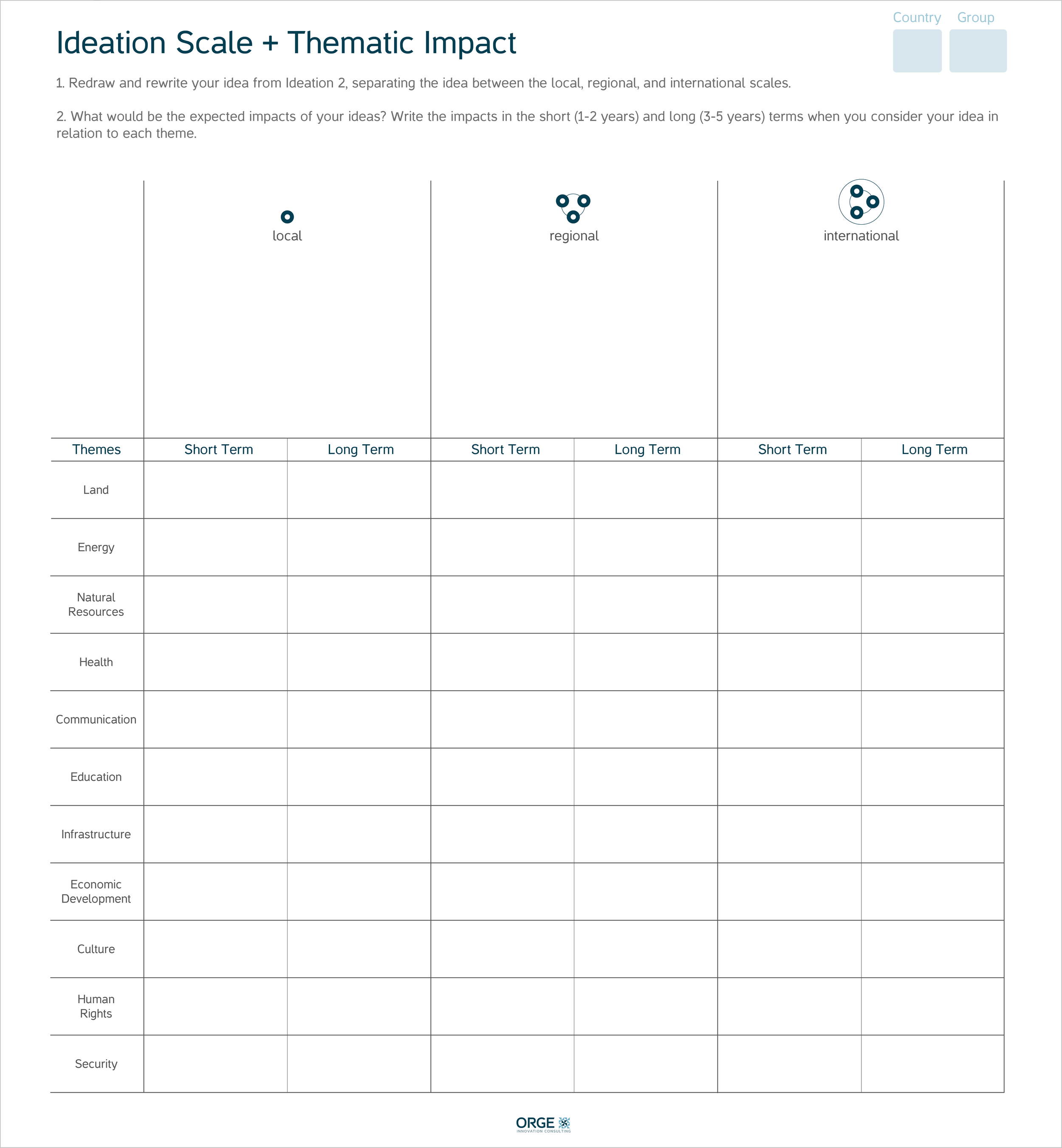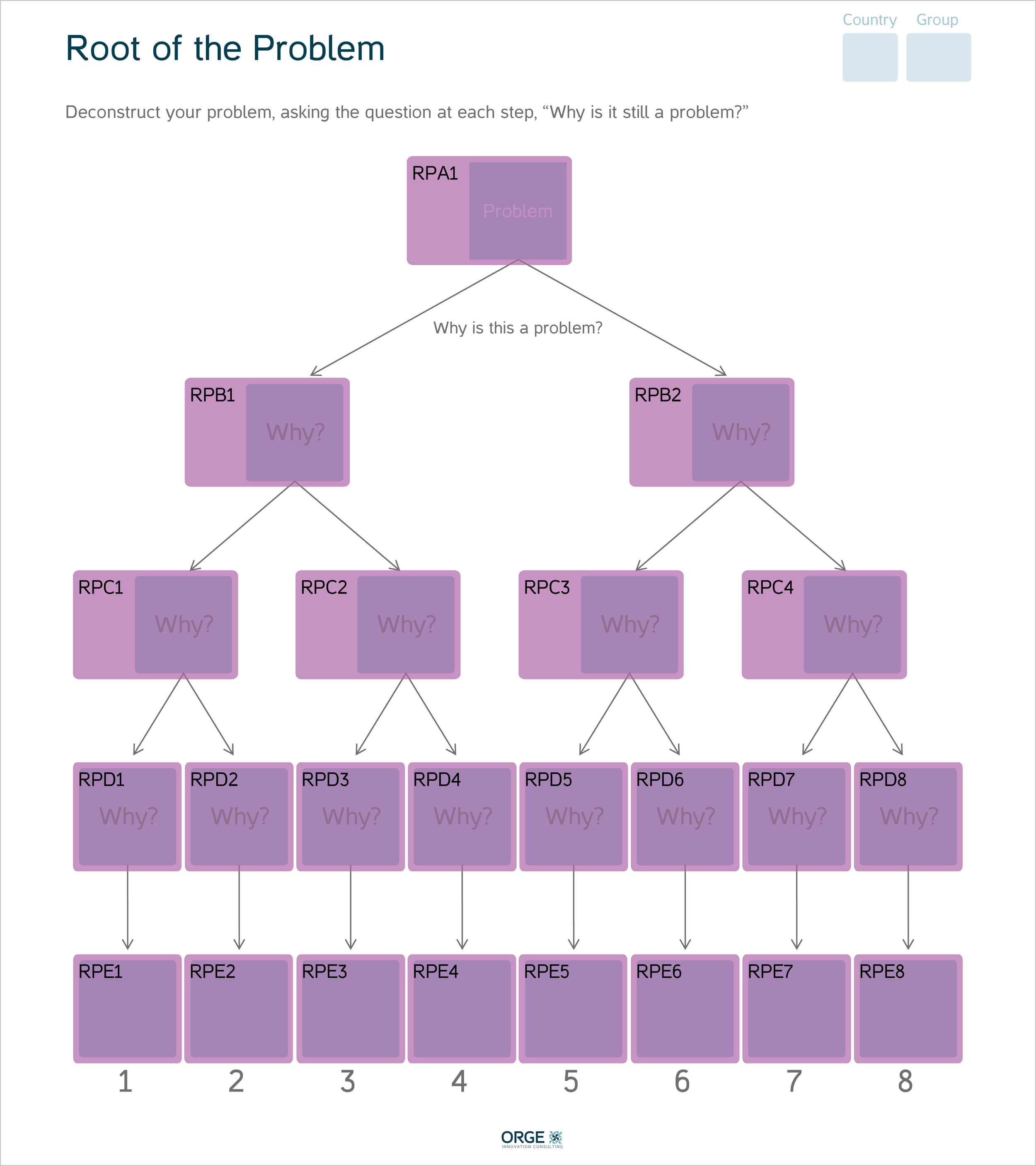SDSN Amazonia Full Consultation
Forming Collaborative Solutions to the Amazon's Most Important Problems
Role: Innovation Consultant/Account Manager/Project Lead for ORGE Innovation
Innovation Consultants:
Eileen Ellis, Laura de Alencar Dusi, Carlos Teixeira
Project Lead:
Eileen Ellis, Laura de Alencar Dusi
NYC Team: Eileen Ellis, Laura de Alencar Dusi, Carlos Teixeira, Andrea Morales, Leah Cabrera Fisher
Clients:
Sustainable Development Solutions Network (SDSN) Amazonia is the regional division of SDSN, which was launched by UN Secretary-General Ban Ki-moon in August 2012 to mobilize scientific and technical expertise from academia, civil society, and the private sector in support of sustainable development problem solving at local, national, and global scales. We aim to accelerate joint learning and help to overcome the compartmentalization of technical and policy work by promoting integrated approaches to the interconnected economic, social, and environmental challenges confronting the world. The SDSN works closely with United Nations agencies, multilateral financing institutions, the private sector, and civil society.
ORGE Innovation Consulting is a design-led innovation consultancy that provides organizations structured methods to help them stay innovative. ORGE Innovation offers services in the areas of Knowledge Brokering, Open Innovation Consortium, Design Strategies, Project Framing, Innovation Capacity Building, and Leadership Mentoring.
ORGE Innovation Consulting and graduate students from Parsons The New School for Design worked on an ongoing multi-country project in partnership with the United Nations Sustainable Development Solutions Network Amazonia (SDSN Amazonia). The goal of the SDSN Amazonia project is to develop transformative, scalable solutions to problems related to climate change, environment, sustainability, poverty, health, education, and communication for Amazon countries. The results from the project influenced universal international government environmental policy including the Amazon Vision 2030 http://www.fao.org/americas/noticias/ver/en/c/262553/.
Working closely with the leadership of SDSN Amazonia, ORGE Innovation developed a full consultation strategy to aid contracted facilitators at each of the 9 country consultations (Brazil, Colombia, Ecuador, Bolivia, Venezuela, Peru, Suriname, Guiana, and French Guiana) in developing solutions which could be compared across the entirety of the SDSN Amazonia project. The participants of the consultations included high-level government representatives, indigenous group leaders, the scientific community, non-profits, non-governmental organizations, and related entities. The resulting solutions created within these consultations were collaboratively designed by these participants, one of which was selected to receive large-scale and long-term funding from SDSN Amazonia and tracked via a specifically-created online platform made by Google. A final consolidation workshop was to be held in New York with representatives from each country consultation, with the selected solution presented at the United Nations budgetary meeting in Paris at the end of 2015.
Open Innovation Consortium
Open Innovation will be used to bring together participants with varying expertise, motivations, and experiences to collaboratively generate ideas and concepts without the overriding influence of a singular viewpoint.
Project Framing
The objectives of the project were distilled into goal-oriented activities that acted as conversation points to broaden perceptions of the themes, problems, and solutions. Project framing provides parameters to focus the thinking process when working with large and complex concepts such as those discussed in the workshops.
Knowledge Brokering
A knowledge brokering guide was provided to SDSN Amazonia leadership and country facilitators to help train team members to implement the innovation workshop. Facilitators acting as knowledge brokers inspire deeper analysis and empathy for thematic stakeholders by prompting participants with thought-provoking questions, providing examples, and acting as guides throughout the workshop process.
Design Strategies
Design strategies were used to visually guide group members across the numerous activities within a tailored workflow.
Innovation Capacity Building
SDSN Amazonia leadership, country facilitators, and participants will be exposed to a new way to convey and blend their individual insights with those of other group members and apply that collective knowledge to analysis and concept generation.
Leadership Mentoring
Country facilitators are mentored by ORGE to ensure high-quality, comparable, and consistent results from each workshop. Findings both from the conferences and workshops will be used to guide SDSN Amazonia in the creation of development projects in the Amazon region.
Analysis
A coding system was developed for workshop facilitators and the SDSN Amazonia leadership for easy comparison and analysis on both workshop and project levels.
Workshop Structure
Theme Ideation, Clustering, and Redistribution
Themes are assigned according to experts in that field, while problems associated with the themes are added, clustered, and ordered on the local and international scales using input from all of the participants.
Complexity Evaluation, Dystopia, and Stakeholder Impact
Specific problems are chosen by each group according to three types of evaluation and prioritization methods: the complexity of the problem in its overlap with other themes, the negative future impact if the problem was never addressed resulting in a dystopia situation, and the number of stakeholders the problem involves at the local, regional, and international levels.
Problem Statement and Selection
Through the evaluation methods, the importance of the problems is clearly defined, then presented to the rest of the room so each group can pick from a variety of situations to analyze and solve.
Root of the Problem and Criteria Generation
In order to address the root cause and not the symptoms, the problem is analyzed in a way to find the underlying reasons the problem still exists. From this, criteria are generated so that forming a solution to these root problems can be a driver in the ideation process.
Day in the Life
From the earlier stakeholder exercise, stakeholders related to the problem are chosen to map a regular day in their life, where the problem impacts them, and any opportunities for intervention.
Ideation 1 and Solution Scaling
Looking at these opportunities from the Day in the Life exercise, a full solution system is created to address the problem. Additionally, each opportunity chosen is identified according to the scale level it occupies, and more ideas within that line of thinking is created for the other scales.
Group Criteria and SDSN Criteria Evaluation
The solution created in Ideation 1 is evaluated according to the criteria developed in the Root of the Problem exercise, as well as the criteria developed by SDSN as part of the project. The idea is then modified to incorporate the findings from the evaluation.
Ideation Scale and Thematic Impact
The final idea is then scaled according to the local, regional, and international levels and the potential positive and negative impacts are explored across the themes in the short (1-2 years) and long (3-5 years) terms.
Action Plan
In order to start thinking about implementing the solution in reality, an action plan is outlined involving the key activities, timeframes, goals, stakeholders, and resources needed.
Idea Aggregation
To provide a full view of the solution to make understanding across groups easier, the problem statement, group-formed criteria, stakeholders, idea and impact, and the action plan are consolidated into one framework for presentation.
Role-Specific Tasks
Project Leader
As project leader, I worked in collaboration with the other project leaders/innovation consultants to work with the SDSN Amazonia client and mentor country facilitators. My role also included the strategy, design, and development of the innovation workshops and full kit as well as the recruitment and management of the rest of the NYC team.
Leadership Mentoring
Since each country workshop will be run either by ORGE Innovation or a local country facilitator, an aspect of my work included mentoring the local country facilitators to ensure that the outcomes from each workshop, as well as the placement of the participants and training of the rest of the local team provided consistent and high-quality content that would fit the aims of the project as a whole.
Full Project Kit Design
The full project kit not only involved the innovation workshop, but also a short explanation of the SDSN Amazonia project, the knowledge brokering manual we use to train facilitators, the coding system we created for analysis, the matrix used to compare solutions across all of the country engagements, as well as other supplementary materials. The full project kit was designed by the three innovation consultants- Laura, Carlos, and myself, and the design of the workshop was done by us along with the rest of the NYC team.
Workshop Materials Creation
The workshop materials were created by the other project lead Laura and myself. Like other workshop materials, it involved the use of Adobe Illustrator after the initial wireframes were formed and tested during the workshop design stage.
Analysis Coding
A coding structure was created to allow the various country facilitators to systematically record the different outputs from each workshop framework. The resulting organized information would form not only a workshop-level viewpoint, but will also provide a clear overview of the outputs from each country consultation to be compared and analyzed by the SDSN Amazonia leadership.
















































































